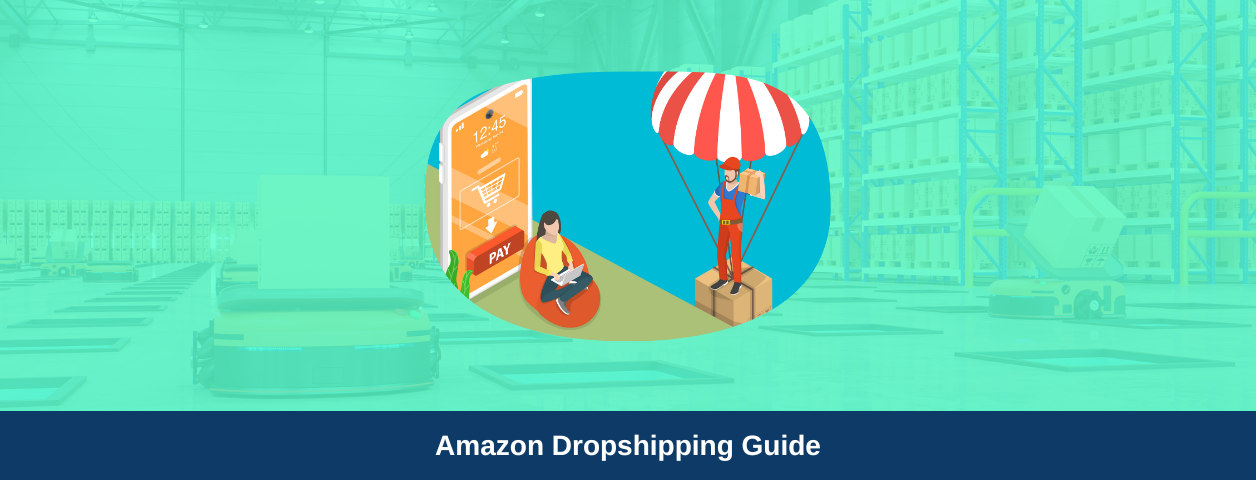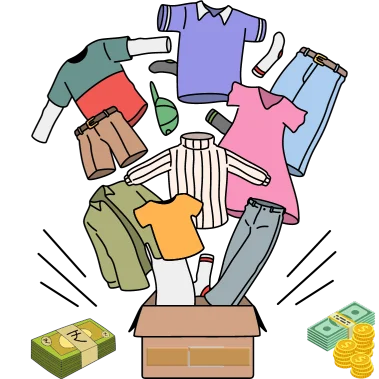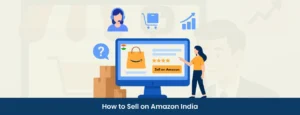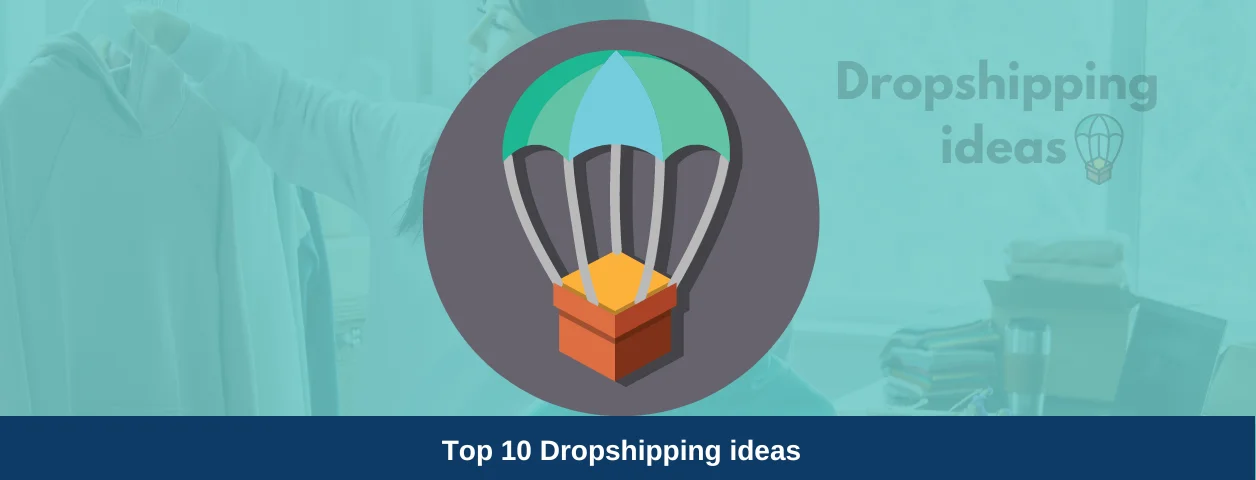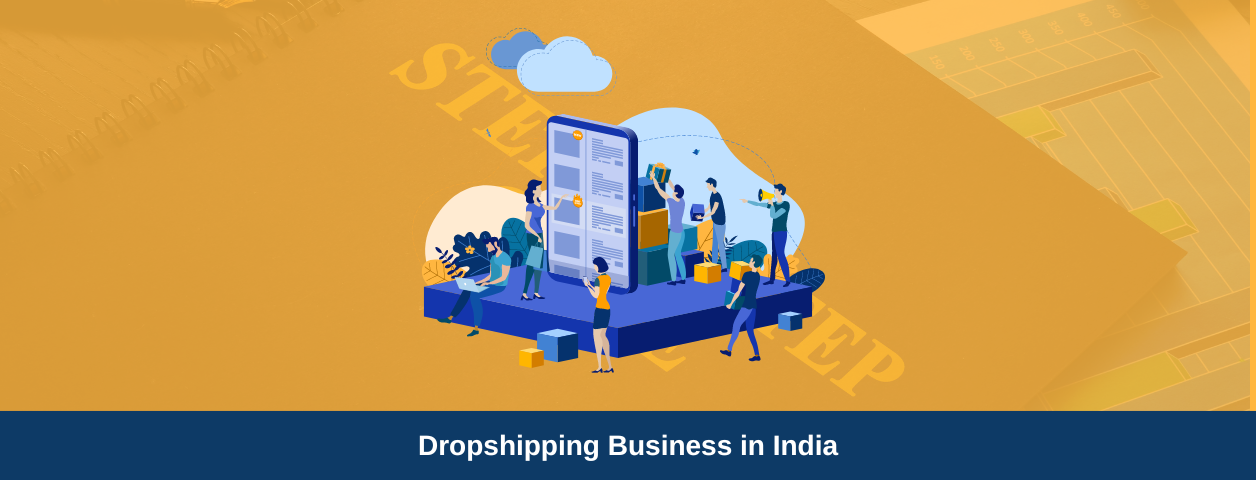The Indian eCommerce market is growing fast, and Amazon is leading the way. Amazon dropshipping lets you start an online business without dealing with inventory, storage, or shipping. You sell products to customers, and a supplier handles the delivery.
This guide explains how to start dropshipping on Amazon in India, the rules you need to follow, common challenges, and the real opportunities for success. Whether you’re a student, side hustler, or full-time entrepreneur, you’ll learn how to start, grow, and succeed, all without buying stock upfront.
Key takeaways from the blog
- Explanation of what Amazon dropshipping is and how the business model works.
- Overview of Amazon’s official dropshipping policy and compliance requirements.
- Pros and cons of using Amazon for dropshipping.
- Key considerations and challenges specific to Indian sellers.
- Breakdown of the costs involved in Amazon dropshipping.
- Step-by-step guide on how to start dropshipping on Amazon.
- Reasons why selling on Amazon is worth considering.
- How Qikink can help you launch and manage your Amazon dropshipping business.
What is Amazon Dropshipping?
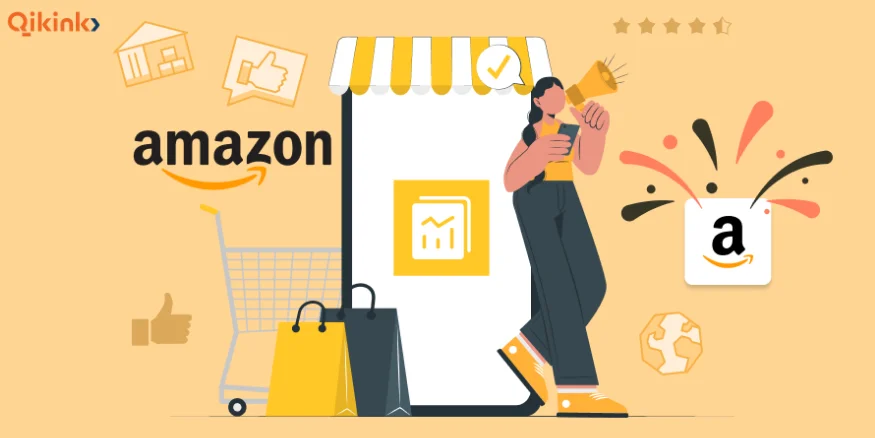
Amazon dropshipping is an e-commerce business model where you, as a seller, list products for sale on Amazon without holding any of the inventory yourself. When a customer buys a product from your Amazon listing, you purchase the item from a third-party supplier (like a manufacturer or wholesaler) and have them ship it directly to the customer.
Your profit is the difference between what the customer paid you on Amazon and what you paid the supplier for the product, minus Amazon’s fees. Essentially, you act as the storefront and customer service agent, while your supplier handles all the storage, packaging, and shipping.
How Does It Work? The Step-by-Step Process
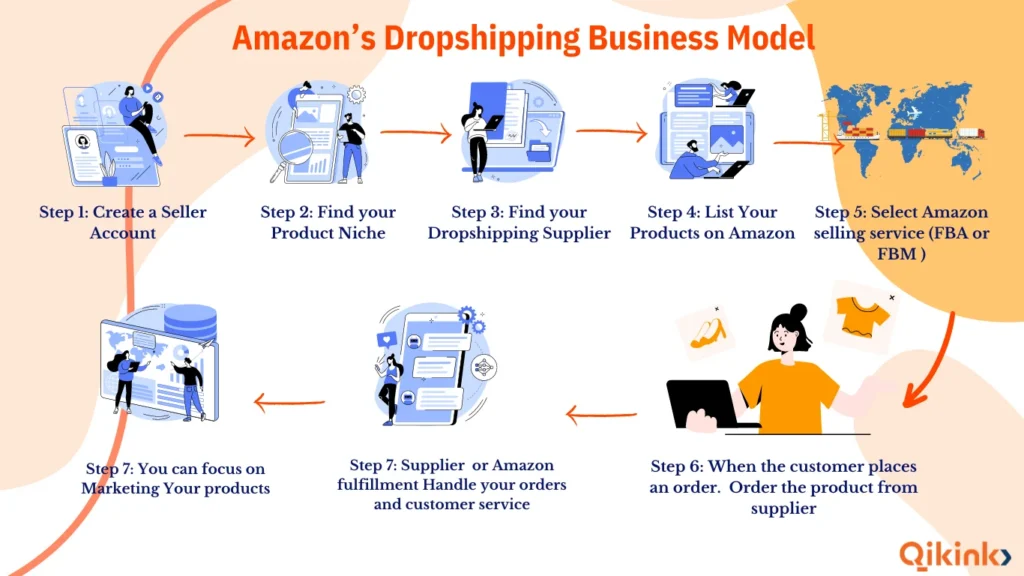
The process generally follows these steps:
- Set Up Your Account: You register as a seller on Amazon Seller Central. This requires documents like your GST number, PAN card, and bank account details.
- Find a Supplier: You find a reliable dropshipping supplier who agrees to ship individual products directly to customers. This could be a manufacturer, a wholesaler, or a specialized dropshipping service.
- List Products on Amazon: You create product listings on Amazon for the items your supplier offers. You are responsible for writing the titles, descriptions, and setting the price.
- A Customer Places an Order: A customer visits Amazon, sees your listing, and purchases the product. Amazon processes their payment and sends the money to your seller account (after deducting their fees).
- You Forward the Order to Your Supplier: You take the customer’s order and shipping details and place an identical order with your supplier, paying their wholesale price.
- The Supplier Ships the Product: Your suppliers like Qikink packages the product and ships it directly to the customer’s address. Crucially, according to Amazon’s policy, the packaging must identify YOU as the seller, not the supplier.
- You Handle Customer Service: You are responsible for all customer communication, including tracking updates, returns, and any issues that arise. From the customer’s perspective, they only dealt with you and Amazon.
Does Amazon's allow Dropshipping?
Amazon does allow dropshipping, but only under strict conditions. Failing to follow these rules can lead to account suspension.
You MUST:
Be the Seller of Record – Your name must appear as the seller on all packing slips, invoices, and any other documents included with the shipment.
Use Neutral or Branded Packaging – Remove all supplier or third-party branding from packaging and documents.
Have a Supplier Agreement – If using a fulfillment service, ensure the supplier agrees you are the only seller.
Handle Returns Yourself – You are responsible for accepting and processing customer returns.
Comply with All Amazon Terms – Follow your seller agreement and all other Amazon policies.
What is NOT Allowed:
Retail Arbitrage – Buying products from another online retailer (e.g., Flipkart, another Amazon seller) and having them ship directly to the customer is prohibited.
Third-Party Branding – Never ship items with packing slips, invoices, or labels showing another seller’s name or contact details.
In short, dropshipping on Amazon is allowed only when customers clearly see you as the seller, and no third-party details are visible in the order.
Pros and Cons of Amazon Dropshipping
|
Pros
|
Cons
|
|---|---|
|
Massive Customer Base
|
Low Profit Margins (High competition drives prices down)
|
|
Low Startup Cost (No need to buy inventory)
|
Strict Amazon Policies (High risk of suspension if rules are broken)
|
|
No Inventory Management (Supplier handles storage)
|
Supplier Dependency (You rely on their stock levels and shipping speed)
|
|
Credibility by Association (Customers trust Amazon)
|
No Control Over Packaging (Hard to build your own brand experience)
|
|
Wide Product Selection (Access to your supplier's full catalog)
|
Complex Customer Service (You handle issues for products you never see)
|
Key Considerations for Indian Sellers
- GST is Mandatory: You cannot sell on Amazon without a valid GST Identification Number (GSTIN).
- Finding Local Suppliers: Using Indian suppliers (found on platforms like Qikink or directly) can significantly reduce shipping times and costs compared to international suppliers like AliExpress.
- Fierce Competition: Amazon is a highly competitive marketplace. You will be competing with thousands of other sellers, including Amazon itself (via Amazon Retail).
- Amazon Fees: Be aware of Amazon’s fees, which include referral fees (a percentage of the sale price, often 5-15%), closing fees, and other charges that will impact your final profit margin.
Trying to figure out your profit on dropshipping?

How much does it cost to start dropshipping on Amazon?
It’s a common question, but Amazon doesn’t have a specific “dropshipping price.” Instead, when you dropship on Amazon, you pay the standard fees that all third-party sellers on the platform pay. The pricing isn’t a single fee but a combination of several costs. Here’s a breakdown for an Indian seller on Amazon.
1. Amazon Seller Account Fee
This is the basic cost to have an active seller account. On Amazon, this is typically part of the Professional Selling Plan, which is required for serious sellers. Amazon India’s policies on this can change, but it is the foundational fee for using the platform’s tools.
2. Referral Fees (Amazon's Commission)
This is the biggest and most important fee. For every item you sell, Amazon takes a percentage of the total sale price (including the item price and any shipping charges). This percentage varies significantly depending on the product category.
- Example Rates on Amazon:
- Apparel: 12% – 24%
- Beauty: 4.5% – 9%
- Mobile Phones: 5%
- Kitchen & Home: 6% – 13.5%
- Books: 3% – 13.5%
Crucially, Amazon has also made referral fees 0% for many products priced under ₹300 to encourage sellers of low-cost items.
3. Closing Fee
This is a small, fixed fee that Amazon charges on every order, and it varies based on the price of the item. For example:
- ₹5 for items priced ₹0-250
- ₹20 for items priced ₹251-500
- ₹40 for items priced ₹501-1000
Other Essential Business Costs (Not Charged by Amazon)
These are not Amazon fees but are central to your dropshipping business’s profitability:
- Cost of Goods Sold (COGS): This is what you pay your dropshipping supplier for the product after you’ve made a sale. This will be your largest single expense.
- Third-Party Automation Tools: If you use software to sync your supplier’s inventory and orders (which is highly recommended), you will have a monthly subscription fee for that tool.
Example Calculation
Let’s say you dropship a T-shirt for ₹999 on Amazon.
- Sale Price: ₹999
- Referral Fee (e.g., 17.5% for Apparel > ₹300): – ₹175
- Closing Fee (for >₹500 item): – ₹40
- GST on Fees (18% on ₹215): – ₹39
- Your Payout from Amazon: ≈ ₹745
From this ₹745, you still need to pay:
- Your Supplier’s Price (e.g., ₹500)
- Your Advertising Costs (e.g., ₹50)
Your final profit in this example, would be ₹195.
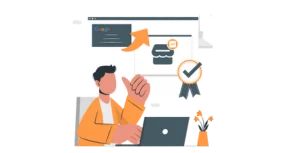
How to start Amazon Dropshipping
Here we share step by step process to start Amazon Dropshipping covering everything from registering your seller account to finding trending products to sell on your Amazon store.
Step 1: Create an Amazon Seller Account

If you have a customer account on Amazon. in or Prime Video, use the same email and password to start creating a seller account. If not, click on ‘Create your Amazon account’, enter your details, and set up a password.
Step 2:Enter GST number
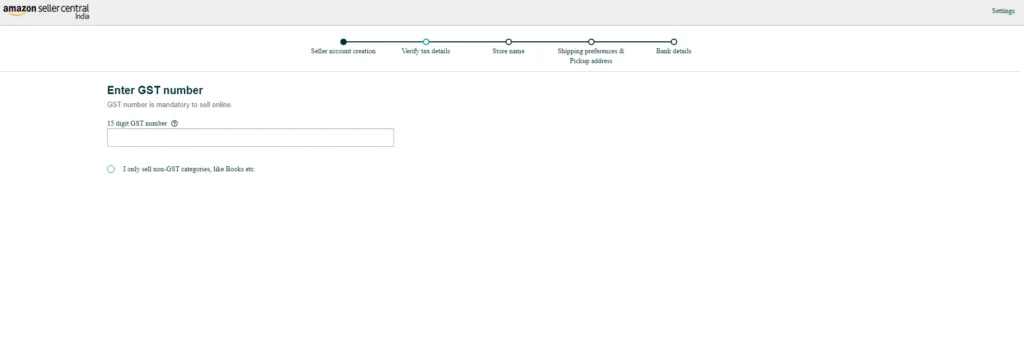
Once you sign in, you have to enter your Goods and Services Tax (GST) number.
Step3: Verifying GST Number

After entering the GST number, click on Continue to Verify. On the next screen, click on Upload GST document.
Step 4: Upload GST Document
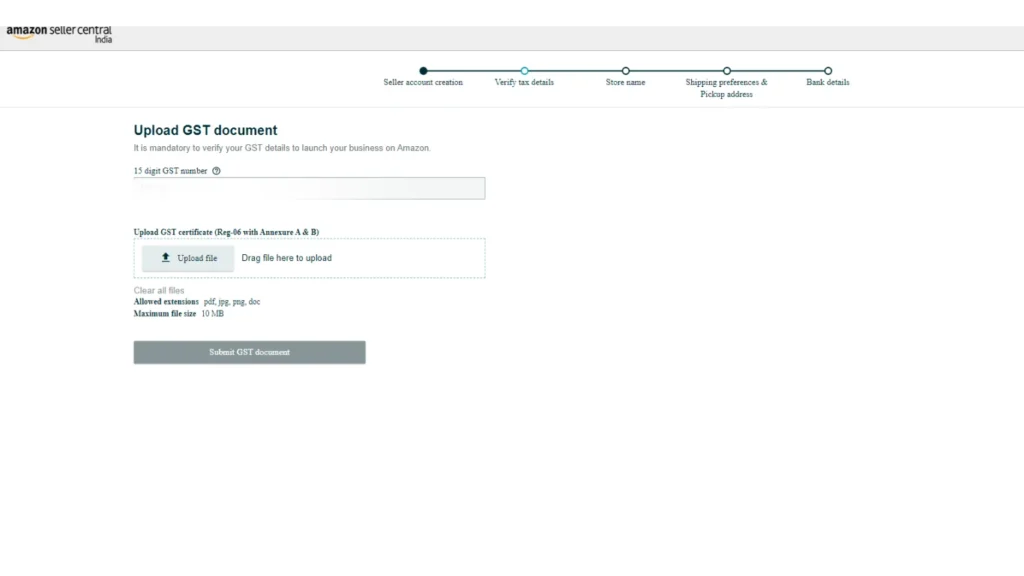
Upload the GSTIN certificate (Reg-06 with Annexure A and Annexure B). The documents can be in pdf, jpg, or doc formats and should be less than 10MB in size. After uploading the documents, click on the ‘Submit GST document.
Step 5: GST verification progress
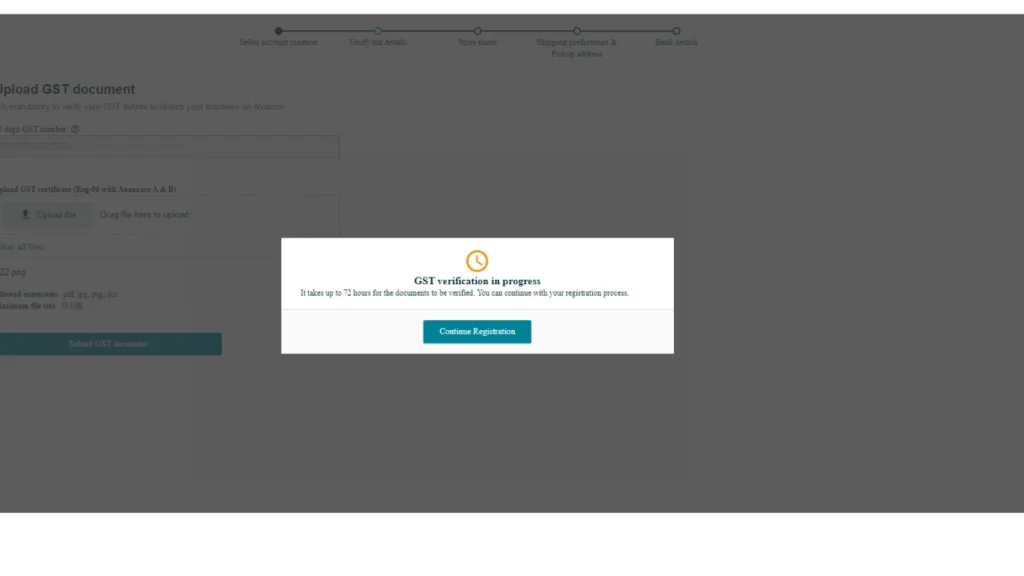
GST verification can take up to 72 hours. You will receive an email to notify you of the outcome of the verification. While the documents are under review, you can continue with the remaining registration steps.
Select 6: Name Your store
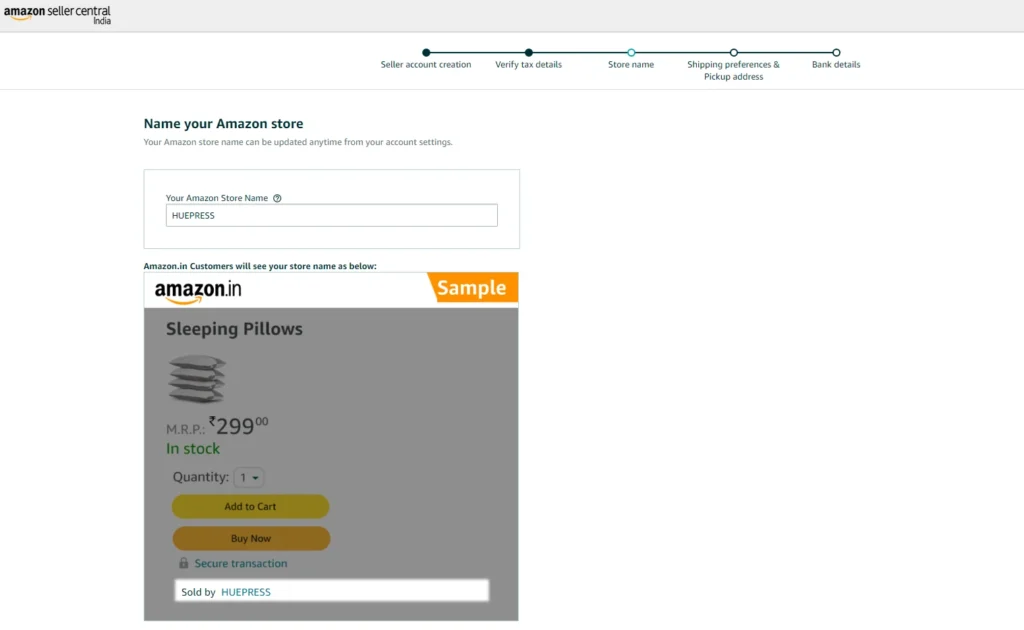
Make your Amazon.in store stand out with a unique store name. This is the name that will represent your business to customers on Amazon.in. You can accept the auto-generated store name suggestions as recommended by Amazon or you can enter a store name yourself.
Step 7: Enter Your Pickup Address
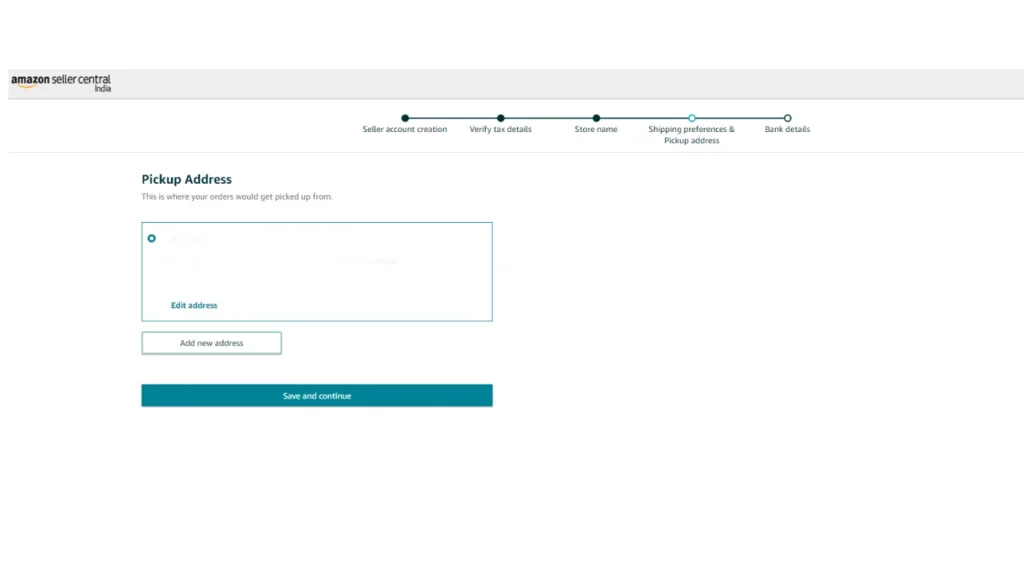
- Next step you have to fill pick up address details. Amazon will collect product shipments for customer orders that you receive from this address. The address on your GST is already there as an option for you to choose.
- If you want products to be picked up from a different location, enter the address by clicking on ‘Add new address’ under account settings on Seller Central.
- You have to ensure that the pickup address is in the same state that the GST is registered in.
Step 8: Choose Your shipping method
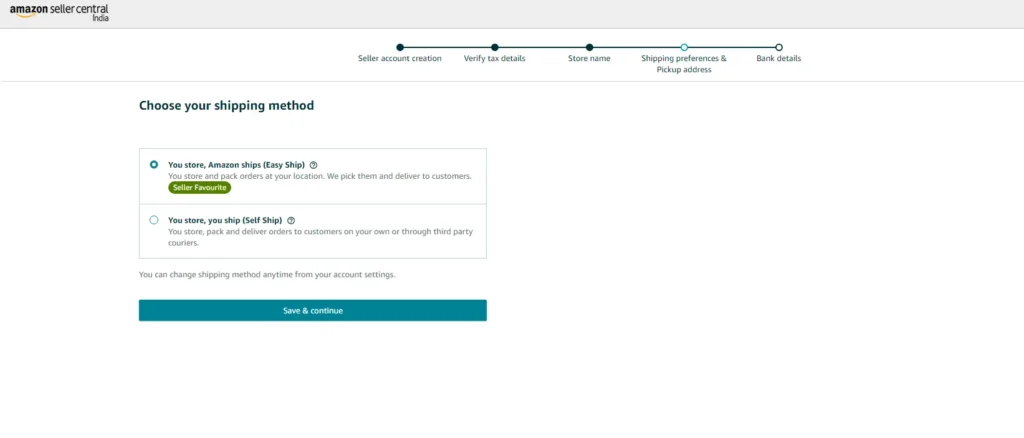
Next, you have to choose a shipping method. You can choose from the following shipping methods to deliver the product to your customers:
- Easy Ship
- Self Ship
Step 9: Select Shipping Fees
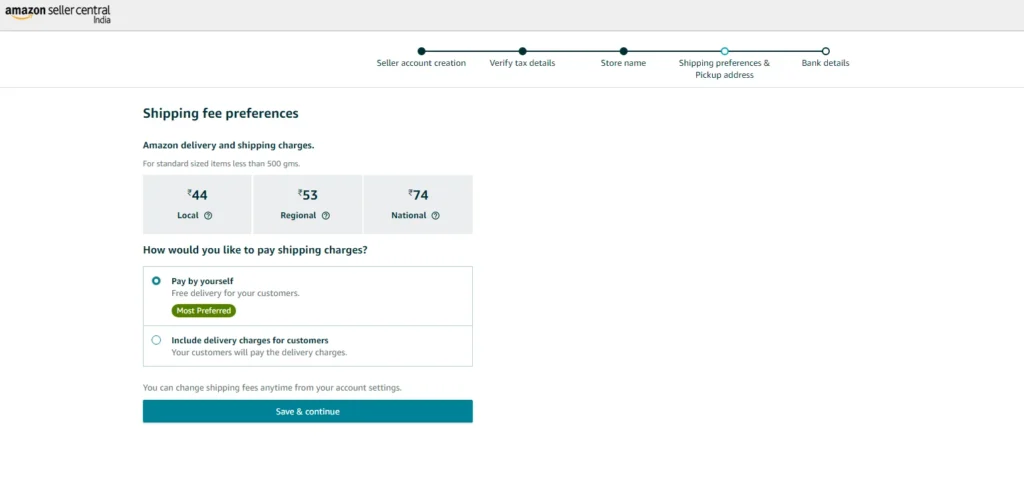
You can choose delivery charges in the product price itself and offer free delivery to customers. Or you can keep delivery charges and product prices separate.
Step 10: Enter Bank Account Details
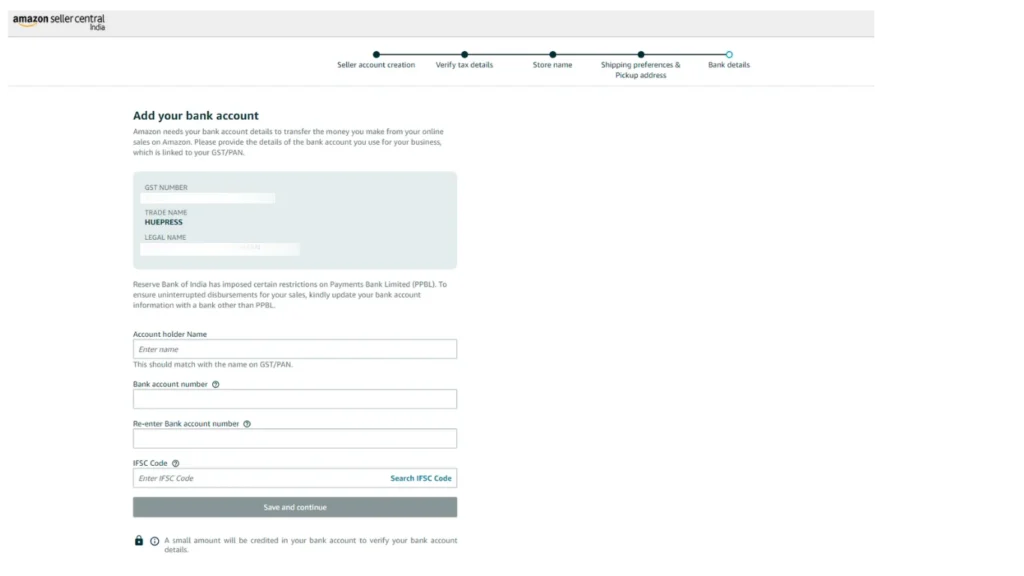
You have to add details of your active bank account. Provide the details of the bank account that you use for your business. The money you make from online sales on Amazon.in will be transferred to this bank account.
Step 11: Select the Default GST rate from the list

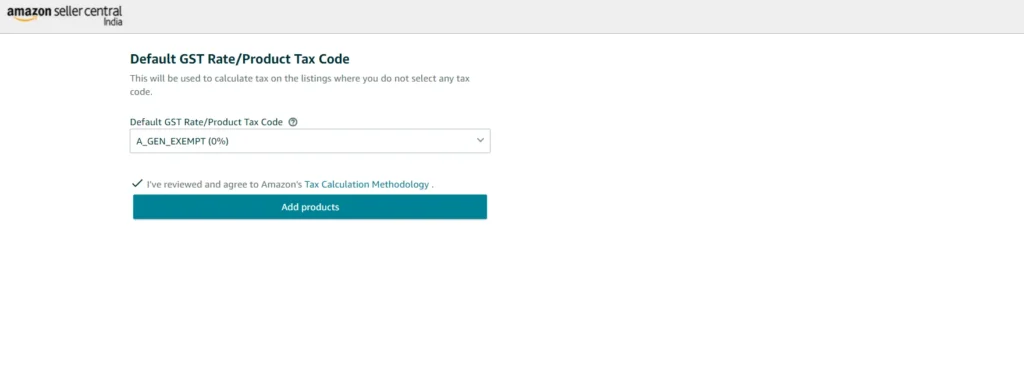
The default GST rate or Product Tax Code (PTC) is the government-notified tax rate for each product category. It applies to product sales when no specific tax code is selected, ensuring the correct tax percentage is applied.
Step 12: Complete Registration
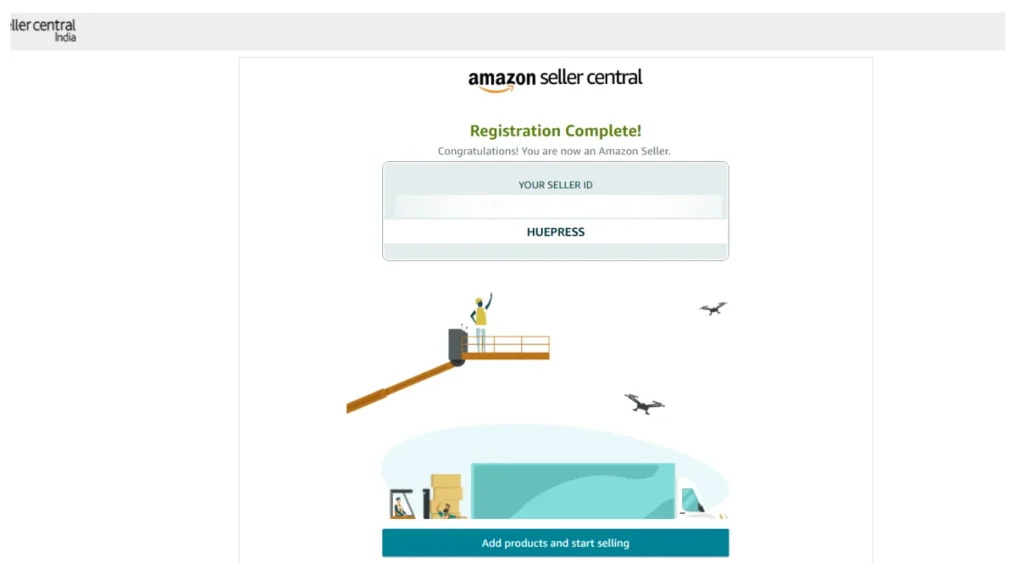
Next, click “Add products and start selling” to list your products and begin selling.
2. Find Profitable Dropshipping Product
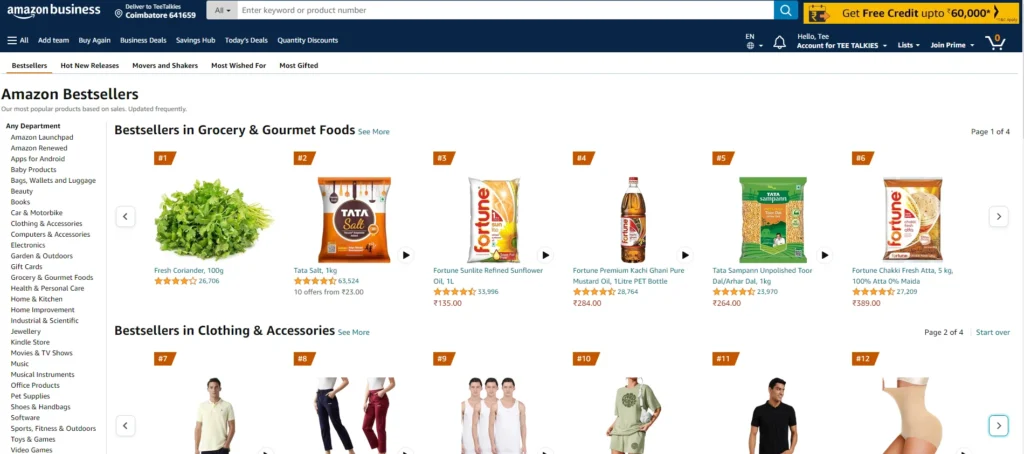
- Research and carefully select the dropshipping products you wish to dropship. Select products with high demand and profitability to ensure success.
- You can find your hero products on Product-finding hubs like AutoDs, product-finding blog articles, And Amazon best sellers.
- Also, There are paid product research tools available to help you find high-demand products, such as Jungle Scout and Seller Board.
👉We recommend our “Most Demanding Products in India” guide to assist you in finding high-demand products for your Amazon dropshipping business.
Here are some products to avoid Amazon dropshipping:
- Alcohol products,
- Hazardous materials,
- Medicine products,
- Tobacco products, and more.
3. Select a dropshipping supplier
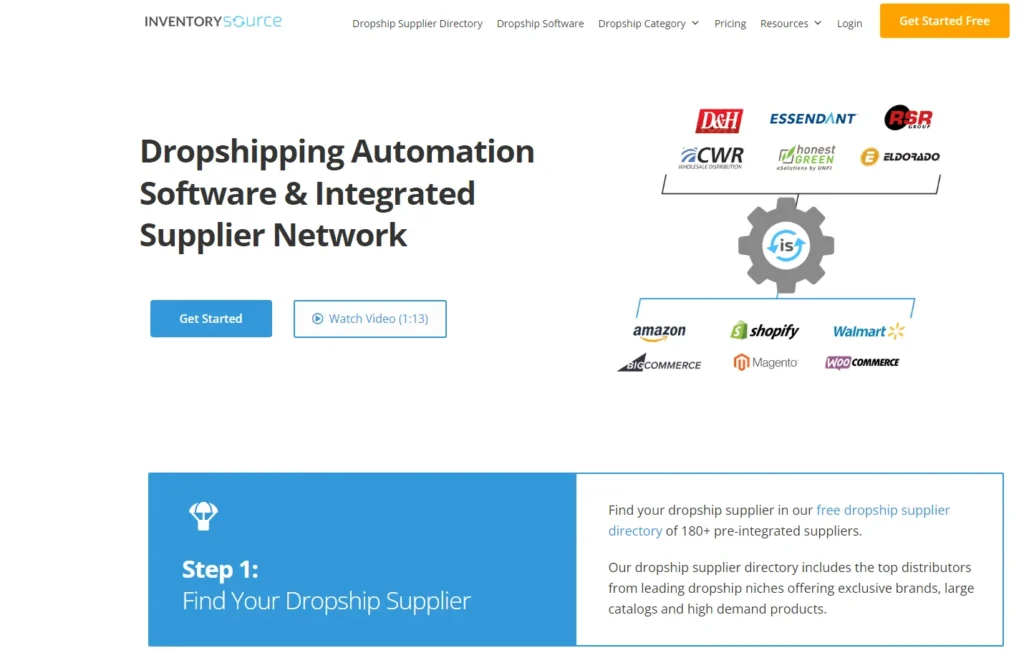
Finding reliable suppliers is crucial for Amazon’s dropshipping success. Find suppliers with a wide range of products, competitive pricing, and customer service. Platforms like Alibaba, AliExpress, and Oberlo are popular choices. Prioritize suppliers with proven track records and positive reviews.
When it comes to selecting a dropshipping supplier, there are many methods available to explore.
- Search suppliers Through Social media platforms like Instagram, Facebook, and LinkedIn
- Utilise Online supplier directories like Inventory Source.
- Find Wholesale Suppliers through Online Dropshipping platforms like Salehoo, and Doba.
- Find suppliers in marketplaces like Amazon, which offers a wide selection of suppliers from around the world.
- Find an Amazon dropshipping supplier through Google Search.
4. List your products
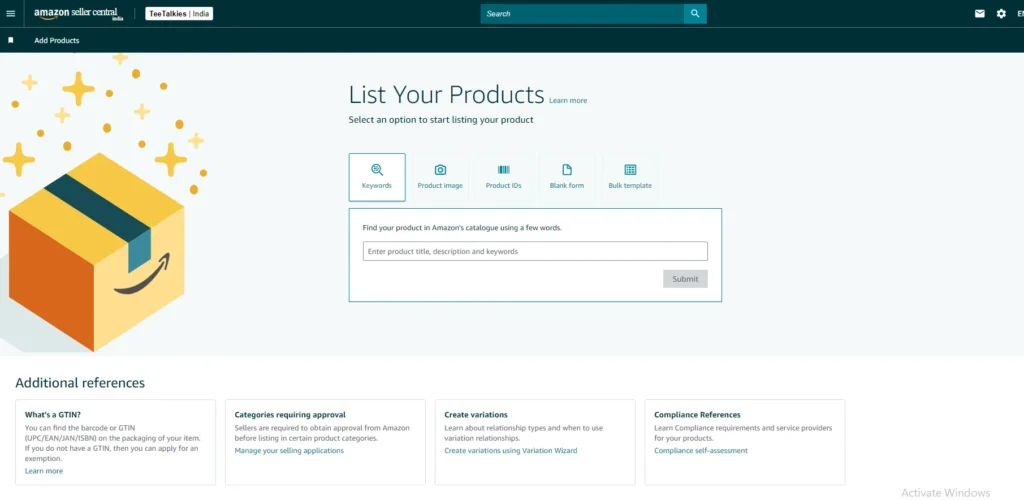
After selecting your dropshipping niche products and suppliers, set up your Amazon store. Optimize product listings with compelling titles, detailed descriptions, and high-quality images. Create a professional storefront that reflects your brand.
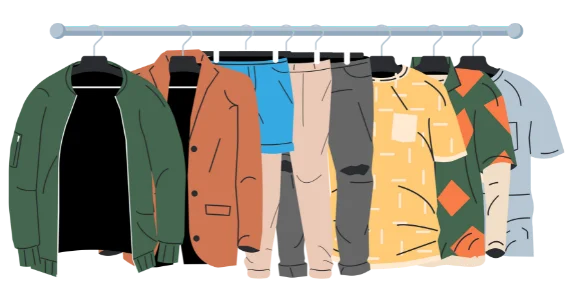
5. Selling Products on Amazon
There are two types of methods on Amazon for selling products:
You can dropship on Amazon through their Fulfilled by Amazon (FBA) program. So let’s see how the program help you to sell along with their terms and conditions.
Amazon FBA vs dropshipping
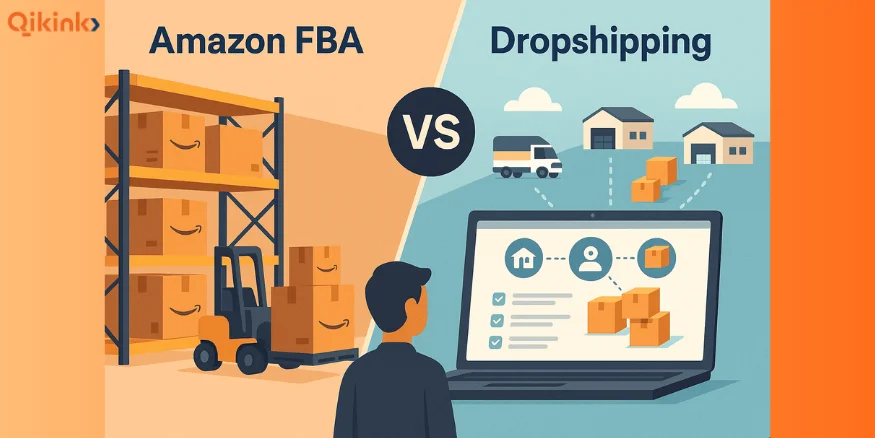
Choosing between Amazon FBA and Dropshipping is a critical decision for any aspiring e-commerce entrepreneur in India. Both are powerful models, but they suit very different goals, budgets, and risk appetites.
What Are They?
- Amazon FBA (Fulfillment by Amazon): You act as a traditional retailer. You buy products in bulk from a manufacturer, ship them to Amazon’s warehouses (fulfillment centers), and list them for sale on Amazon. When a customer orders, Amazon handles everything, storage, packing, shipping, and initial customer service.
- Dropshipping: You act as a digital storefront or middleman. You list products for sale (on your own website or a marketplace) without ever buying or holding the inventory. When a customer orders, you forward the order to your supplier, and the supplier ships the product directly to the customer.
How Each Model Works: A Step-by-Step Flow
|
Amazon FBA
|
Dropshipping
|
|---|---|
|
1. You find a product and buy it in bulk.
|
1. You find a supplier and their product catalog.
|
|
2. You ship your inventory to an Amazon warehouse.
|
2. You list the product on your online store.
|
|
3. A customer buys your product on Amazon.
|
3. A customer buys the product from your store.
|
|
4. Amazon picks, packs, and ships the order.
|
4. You forward the order & payment to your supplier.
|
|
5. Amazon handles customer service & returns.
|
5. Your supplier picks, packs, and ships the order.
|
|
6. Your profit = Sale Price - Product Cost - Amazon Fees.
|
6. Your profit = Sale Price - Product Cost - Supplier Fees.
|
Key Differences: FBA vs. Dropshipping at a Glance
|
Feature
|
Amazon FBA
|
Dropshipping
|
|---|---|---|
|
Upfront Investment
|
High. You must buy inventory in bulk upfront.
|
Very Low. No need to buy inventory. Your main costs are for your website/platform.
|
|
Inventory Management
|
You are responsible for stock levels, but Amazon stores it. You risk having unsold stock.
|
None. The supplier manages all inventory. The risk is selling an item that is out of stock.
|
|
Profit Margins
|
Higher. Buying in bulk reduces your cost per item.
|
Lower. You are buying single items at a time, so the cost per unit is higher.
|
|
Shipping & Logistics
|
Hands-Off. Amazon's world-class logistics handle everything, including fast Prime delivery.
|
Hands-On. You are dependent on the supplier's shipping speed and quality, which can vary greatly.
|
|
Branding & Control
|
Good. You can create your own private-label brand and use custom packaging when sending goods to Amazon.
|
Limited. Usually no control over packaging, unless using a specialized service (like Qikink).
|
|
Business Complexity
|
Simpler day-to-day (Amazon handles fulfillment), but more complex upfront (sourcing, shipping to FBA).
|
More complex day-to-day (managing individual orders, customer service, supplier issues).
|
|
Scalability
|
Highly scalable. As sales grow, you just send more stock to Amazon.
|
Can be harder to scale. More orders mean more manual processing and customer service tickets.
|
Which Model is Right for You?
Choose Amazon FBA if…
- You have capital to invest. You are comfortable spending money upfront to buy inventory (from thousands to lakhs of rupees).
- You want to build a long-term brand. FBA is ideal for creating your own private-label products.
- You have a proven “winner” product. You’ve done your research and are confident a product will sell.
- You want higher profit margins and are willing to take on the initial risk.
- You value hands-off fulfillment. You want to leverage Amazon’s Prime delivery and customer trust.
Choose Dropshipping if…
- You have a very low starting budget. You want to start an e-commerce business with minimal financial risk.
- You want to test many different products and ideas quickly without any commitment.
- You are good at marketing and customer service. Your main job is driving traffic and managing customer relationships.
- You want location independence. You can run your business from anywhere with a laptop.
- You want maximum flexibility and don’t want to be tied to a single platform like Amazon.
Difference – Amazon FBA & Dropshipping
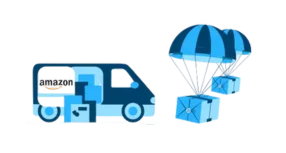
Other ways to sell on Amazon
In this section, we’ll explore alternative methods for selling on Amazon beyond traditional retail or dropshipping available to grow your business on the world’s largest marketplace.
1. Amazon Affiliate Marketing
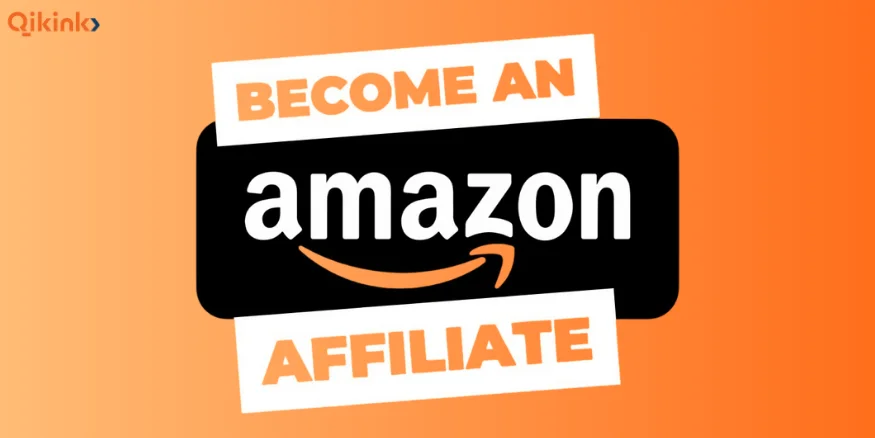
Amazon’s affiliate program, called Amazon Associates, is a free and widely used alternative to dropshipping. Affiliates earn money by promoting Amazon products through their websites, social media, or ads.
When someone clicks on an affiliate link and completes a purchase on Amazon, the affiliate earns a commission. The commission rates depend on the product category and typically range between 3% and 5%.
To join the program, you’ll need a website or social media account that meets Amazon’s eligibility requirements.
2. Fulfilled by Merchant (FBM)

With Amazon FBM, sellers are responsible for managing their own inventory, processing orders, packaging, shipping products directly to customers, and handling all aspects of fulfillment and customer service. Amazon provides tools and automation features to help streamline these tasks, making it more efficient and cost-effective for sellers who prefer to fulfill orders themselves.
If you’re starting dropshipping in India, FBM is a great way to begin. By automating key parts of your Amazon dropshipping business, you can scale faster and focus on tracking performance, managing product listings, and running ad campaigns to drive sales.
Shipping methods in Amazon dropshipping
Here we share how to fulfill Amazon orders. You can select the mode of shipping when you opt for Merchant Fulfilment.
1. Amazon Easy Ship
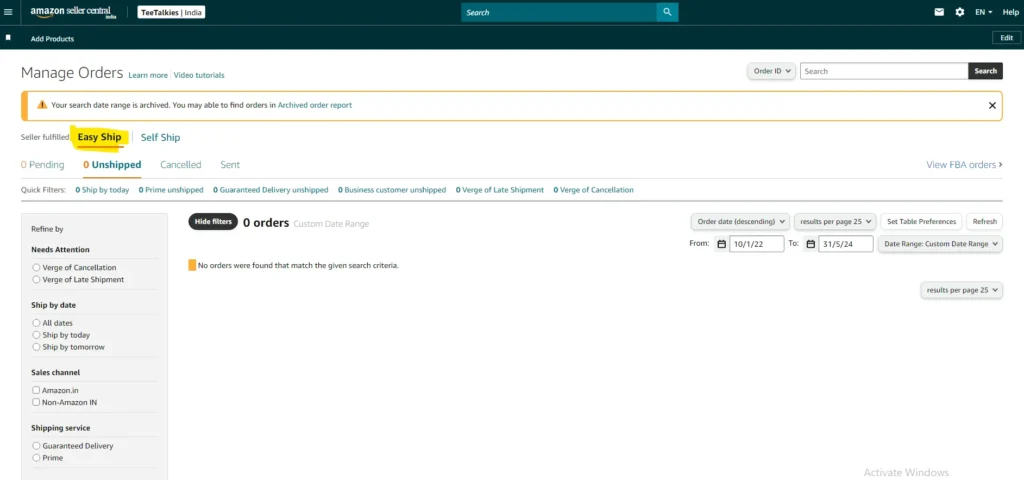
- In Amazon fulfillment, the order is printed and packed by us (the manufacturer) and shipped by Amazon.
- Amazon Easy Ship is a delivery service for Amazon sellers.
- When you choose Amazon Easy Ship, your orders are picked up from your manufacturer’s location by an Amazon Logistics delivery associate and delivered to the buyers’ doorstep with minimal effort from you.
- Easy Ship allows your customers to track their orders and delivery dates.
- Buyers also get an option to pay for orders at the time of delivery using the Pay on Delivery (also known as Cash on Delivery) feature through Easy Ship.
- The funds for the orders are deposited directly into your bank account.
2. Self Shipping
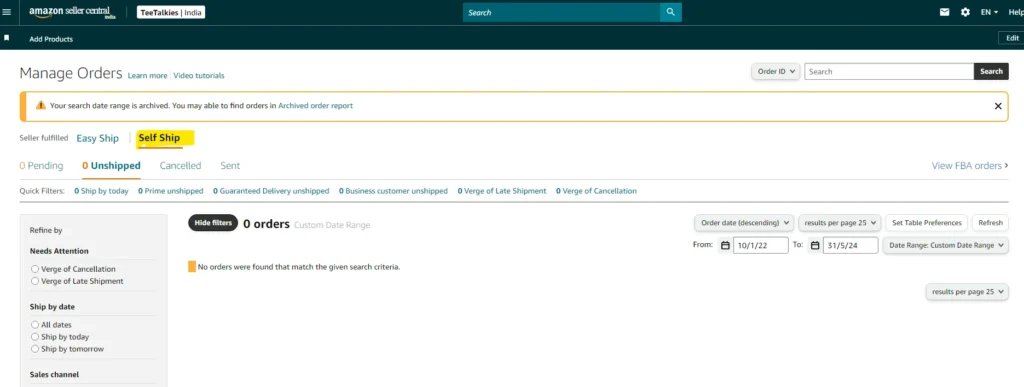
- Self-shipping means shipping orders by yourself hence, you receive only prepaid orders.
- In Self Shipping mode, you can either ship orders using Qikink’s shipping services or partner with a courier service to ship your orders.
- You will also need to register your business on Qikink’s address. In that case, you will need GSTIN of Tamil Nadu.
"Why Amazon is Worth It?"
The single biggest reason to dropship on Amazon is to gain instant access to a massive, high-intent customer base that is already conditioned to buy.
- The Data: As of early 2025, Amazon consistently receives over 350 million visits per month. This is a colossal audience of active shoppers that would take years and a massive marketing budget to attract to your own website.
- Why It Matters: You don’t have to spend as much time or money on brand awareness or driving traffic. You can list a product and potentially get your first sale the same day simply by leveraging the trust and traffic Amazon has already built.
- Source: Web traffic analysis firms like SimilarWeb and Statista regularly publish data on top e-commerce site traffic.
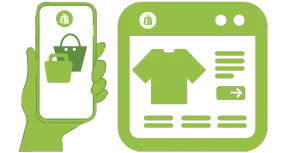
How Qikink helps you to Start Dropshipping?
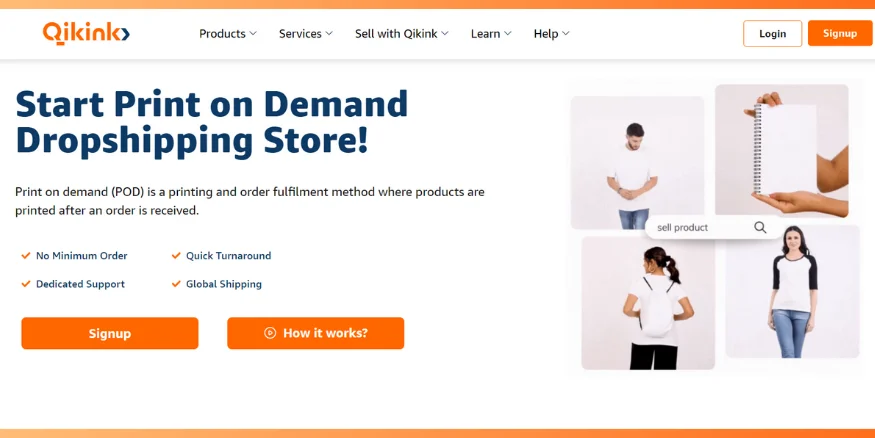
Qikink is a leading print-on-demand and dropshipping platform that makes it easy to launch and run your online store without managing inventory or handling logistics. With thousands of Indian and global brands trusting Qikink, it’s a reliable solution with various features for entrepreneurs looking to start a business with minimal upfront costs.
Here’s how Qikink helps you succeed in dropshipping:
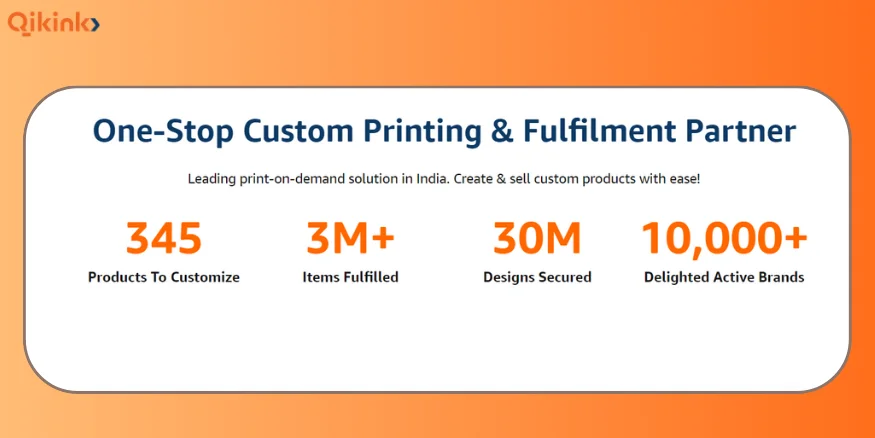
- No Signup Fees or Hidden Costs:
Qikink allows you to start selling without any registration charges, subscription fees, or minimum deposits. You only pay when a customer places an order, making it a risk-free way to enter the dropshipping space. - Ecommerce Platform Integration:
Effortlessly connect Qikink with popular platforms like Shopify and WooCommerce. This seamless integration ensures easy product syncing, order management, and fulfillment, all from one dashboard. - Custom Branding on Every Order:
Build a strong brand presence with free custom branding. Qikink adds your logo, thank-you notes, or stickers to every package, helping you create a memorable unboxing experience that increases customer loyalty. - Wide Product Range & Printing Methods:
Sell a diverse selection of customizable products, backed by high-quality printing techniques like DTG, DTF, Sublimation, Embroidery, Screen Printing, UV, and more. This flexibility allows you to cater to different niches and market preferences.
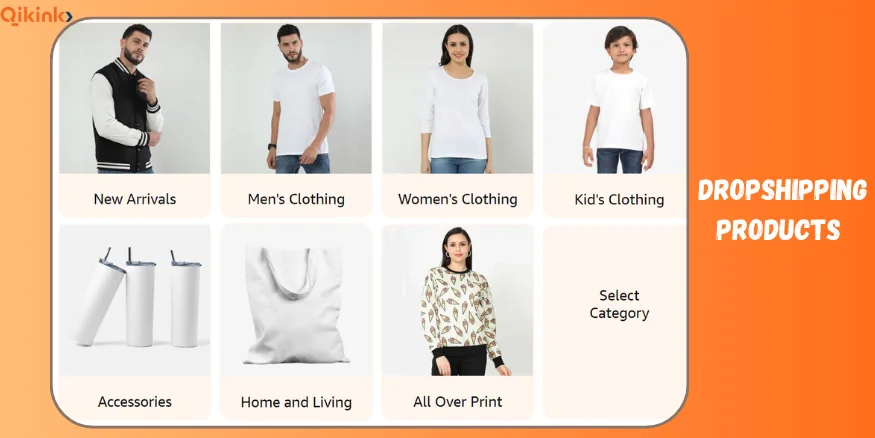
- Worldwide Shipping with Trusted Partners:
Qikink ensures your products are delivered globally through reliable shipping carriers, allowing you to expand your customer base beyond borders.
With Qikink handling printing, packing, and delivery, you can focus on what matters most, growing your brand and delighting your customers.
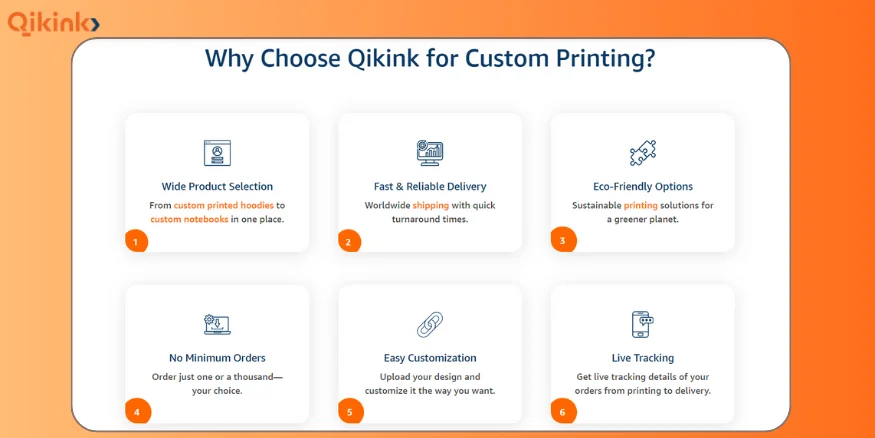
👉Sign up with Qikink and launch your dropshipping business effortlessly, without inventory worries.
Conclusion: Start, Scale & Succeed with Zero Inventory
Amazon dropshipping in India presents a powerful opportunity for aspiring entrepreneurs to launch and grow an eCommerce business without the risks of holding inventory. With the right strategy, choosing a profitable niche, sourcing from reliable suppliers, and following Amazon’s policies, you can build a scalable business model that minimizes overhead and maximizes potential.
Whether you’re just starting out or looking to expand your income streams, dropshipping on Amazon offers a low-barrier entry into India’s booming eCommerce space. Stay compliant, stay customer-focused, and leverage the tools and automation available to streamline operations. With consistency and smart execution, you can succeed in Amazon dropshipping, even with zero inventory.
Read More
- How dropshipping works for your online store?
- Amazon FBA vs Dropshipping: Which is better for your Online Business
- 10 Profitable dropshipping business ideas to try
- Guide to sell on Amazon using Dropshipping
- AI Tools for Dropshipping: How to start and scale guide
- 15+ Trending Dropshipping products for high profit
Frequently Asked Questions
Can I dropship on Amazon India legally?
Yes, dropshipping is allowed on Amazon India, but you must follow their guidelines, your name must appear on all invoices and packaging.
What are the best suppliers for Amazon dropshipping in India?
Some trusted options include Qikink, IndiaMART, TradeIndia, and Baapstore. Always vet suppliers for quality and delivery time.
How do I get paid on Amazon as a dropshipper?
Amazon pays sellers directly to their bank account after deducting fees, typically every 7–14 days.
What are the risks of Amazon dropshipping?
Key risks include account suspension due to policy violations, high return rates, or slow supplier fulfillment.

